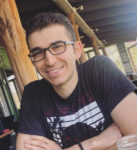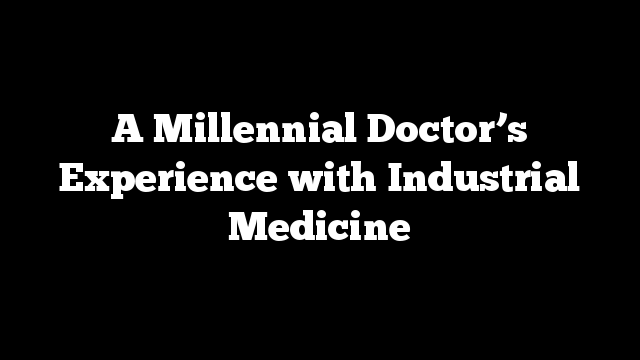
By TALAL HILAL, MD
A survey of 200 physicians under the age of 35 showed that 56% reported unhappiness with the current state of medicine. That number didn’t seem surprising to me at first. I was not particularly “happy” at the time of reading this survey either.
I’ve aspired to become an
oncologist for as long as I can remember. In oncology, despite my inability to
cure, I can always try to heal. I form connections with patients and their
families as they embark on a journey that is quite often their last. I learn
from my patients as much as, and at times more than, they learn from me.
But all of this is overshadowed by
a sense of heaviness that I frequently encounter as I enter the clinic room. That
sense of heaviness hits when a patient tells me of the time when they were placed
on a “brief hold” for more than half an hour in order to reach someone to get a
prescription refilled or reschedule an appointment. Or when their insurance refused
to cover the drug that I had prescribed to them. It is when I hear that clinic
visits or treatments are not scheduled due to insurance authorization delays. Or
when I’m asked about the cost of drugs and end up having to explain how nobody
really knows.
By the time I hear these stories,
the “allotted time” for the clinic visit is coming to an end. The emotional
burden and physical symptoms of my patient’s cancer diagnosis or chemotherapy
side effects often not adequately addressed.
I recall Jessica, a violinist who
has lived with metastatic breast cancer for 4 years, and whose disease has
progressed after multiple lines of chemotherapy. She was hospitalized with a
malignant pleural effusion that impaired her ability to breathe while playing
the violin. I discussed with her the option of enrolling on a clinical trial
after leaving the hospital.
“I am so glad you have clinical
trials here,” she replied ecstatically. “I’ve been asking about research
studies all over the state”.
The days went by and she had not
been scheduled to start on the investigational agent. “Why the delay?” I asked.
“We are awaiting authorization from her insurance company”, was the reply I
received.
A couple of weeks later, Jessica’s pleural
effusion recurred and she started developing pain related to her bone
metastases. She underwent a pleurodesis procedure to prevent re-accumulation of
fluid. By then, her functional status had deteriorated substantially. She was no
longer eligible to participate in the clinical trial and decided to pursue
hospice care. She died several weeks later.
These stories are not uncommon. I have
seen many patients whose treatments are delayed because of administrative
barriers. In this example, and many others, the health system did not have the patient’s
care as their primary concern; a system that is algorithm-driven and blind to individual
human needs.
But at the other end of these
stories are the physicians. I will never forget Jessica, and countless others
who suffered because of a system that does not care about the individual. These
stories linger and create a sense of despondency with the medical system in
which I practice.
But why is this the reality of
medicine now? The short answer is because we surrendered our autonomy as
physicians and allowed administrators and third-party payers to take over. Industrial
healthcare was then born; a system that is designed and developed to deliver services
to patients while achieving maximum returns on investment for all parties
involved except the patients. Multiple stakeholders are involved, and each has
a goal of profiting off of the patient’s illness. During this industrial expansion,
the system has done two things. First, it limited physician autonomy –
checklists were created, time for clinic visits or procedures restricted, and
practice standardized. Second, it left
patients with a full time job to attempt and navigate countless barriers in
order to maintain and/or improve their health. If you are reading this and have
ever been a patient, you will know exactly what I mean.
This relationship between physician
autonomy and patient care is the core of the medical profession, and it seems
to be the most severely damaged aspect of our current system. Take the
following example; oncologists are pressured to see 20-25 patients with
cancer/day. This limited time available for each patient makes difficult
conversations about prognosis even harder. In many cases, these physicians have
minimal control of their own schedule. The net result is decreased physician satisfaction
with their job when they have only 10-15 minutes with each patient, and by the
same token, patients rarely have a good understanding of their illness. And
yet, I have received emails that contain words such as “operational
efficiencies”, but have never received emails that contain words such as “kind
care” or “non-rushed care”.
Physicians functioning within a box eventually become dehumanized. Terms such as “provider” and “consumer” are commonly thrown around. And in the process, I find that physicians are questioning their purpose. Doctors and nurses are occupied with checklists to the point that they start seeing patients as objects; a room number or a diagnosis. “How is room 307 doing?” is a common question on rounds.
In the last decade, terms such as
“burnout” have become popular. Burnout is a manifestation of these aforementioned
ills. And instead of solving the root cause of the problem, physicians are
blamed and the burden placed on them to become more resilient. I find myself
commonly adjusting to mandates and rules rather than having a say in their
creation, implementation, or, dare I say, their elimination.
As I approach the end of my
fellowship and the beginning of my career as an oncologist, I think about how I
can make this experience better for myself and for my patients. Technology has
introduced methods for safer practice including medication reconciliation,
checking and rechecking orders, but folks who have no horse in the race are
harnessing this technology. Physicians on the frontlines who know what works
for them and for their patients are not involved in the design and implementation
of these technologies. Take the electronic medical record (EMR) for example; a
Twitter account (@EPICEMRparody) was
recently created as a parody of the realities of clicking away on a screen
while the patient is sitting in the background. How did we get to that?
What seems obvious to me is that neither
patients nor the physicians are at the center of the equation. In order to
really care for patients, the system has to adjust to the patient and
physician’s needs, and not the other way around. It has to provide more
autonomy for physicians. Simultaneously, the system has to alleviate the burden
on patients. To minimize the time they spend interacting with the healthcare
system so they can live their lives instead of having their lives revolve around
their illness. These strategies have to start by putting humans first, and
genuinely caring. It means keeping open minds and ears to ideas. It means less
rigidity.
As things stand, physician turnover and replacement is increasing, and burnout has become the norm. Patient’s distrust in the healthcare system and physicians is at all-time high. In order to reestablish our purpose and the patient’s trust in us, we as both physicians and patients have to speak up. This is my attempt at speaking up.
Talal Hilal is a graduating hematology/oncology fellow at the Mayo Clinic in Arizona. He will be joining the hematology faculty at the University of Mississippi this summer, with a focus on lymphoproliferative disorders.
